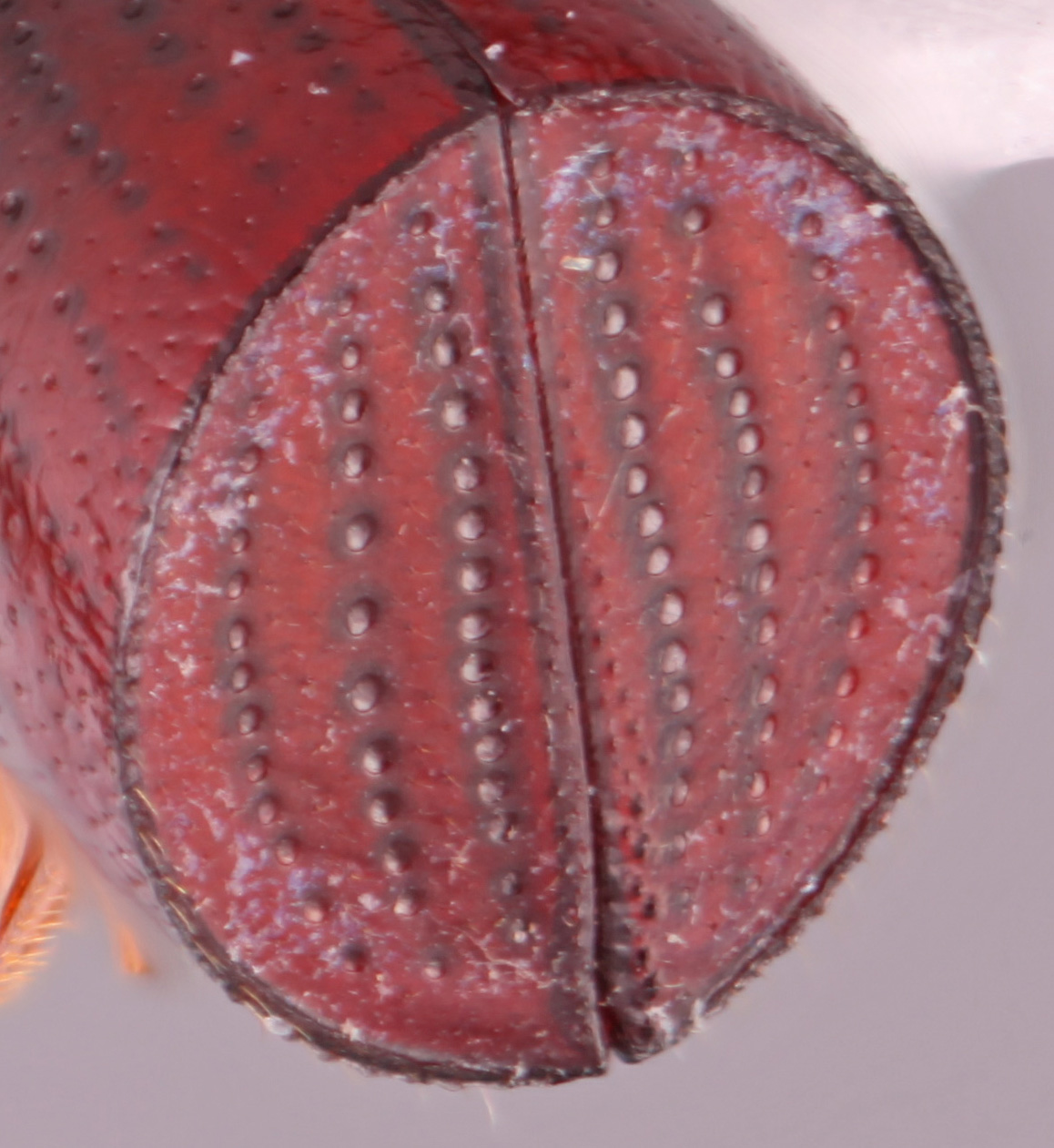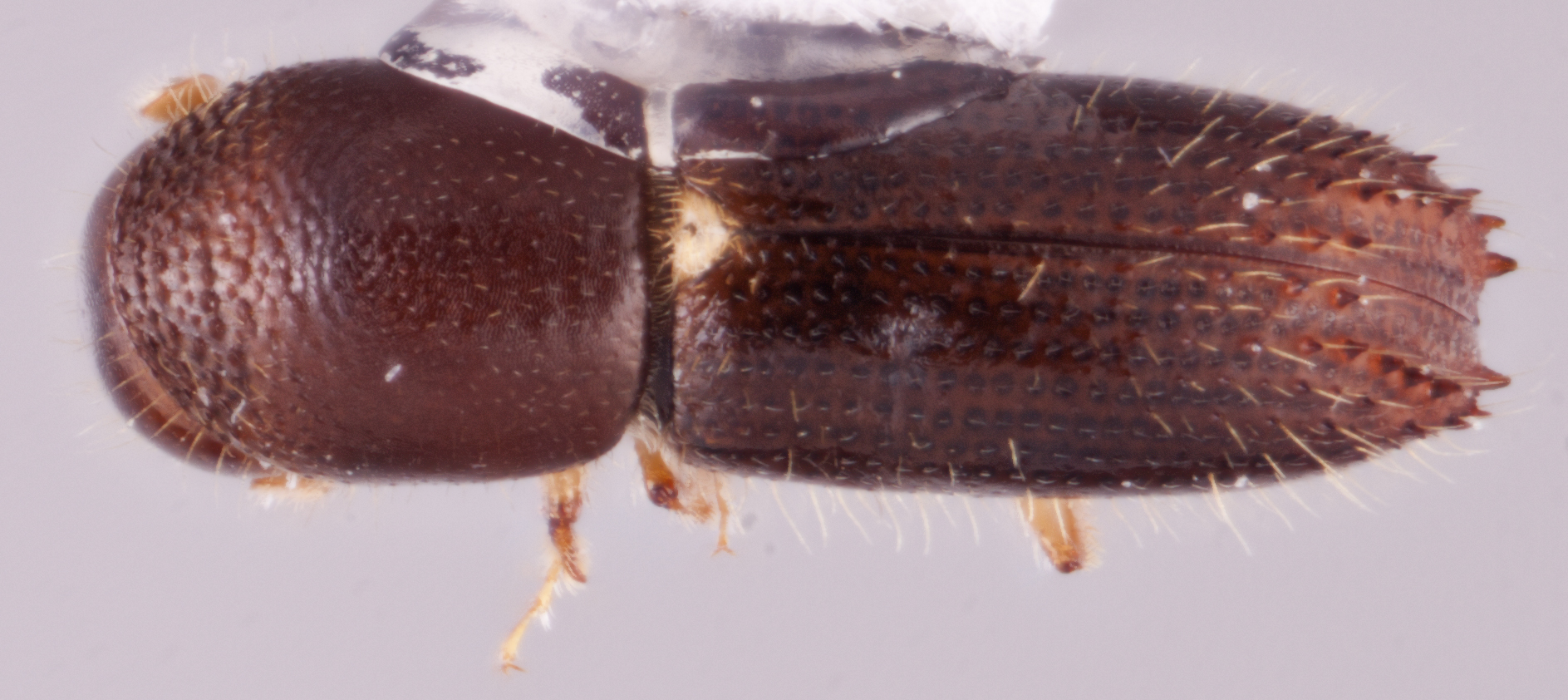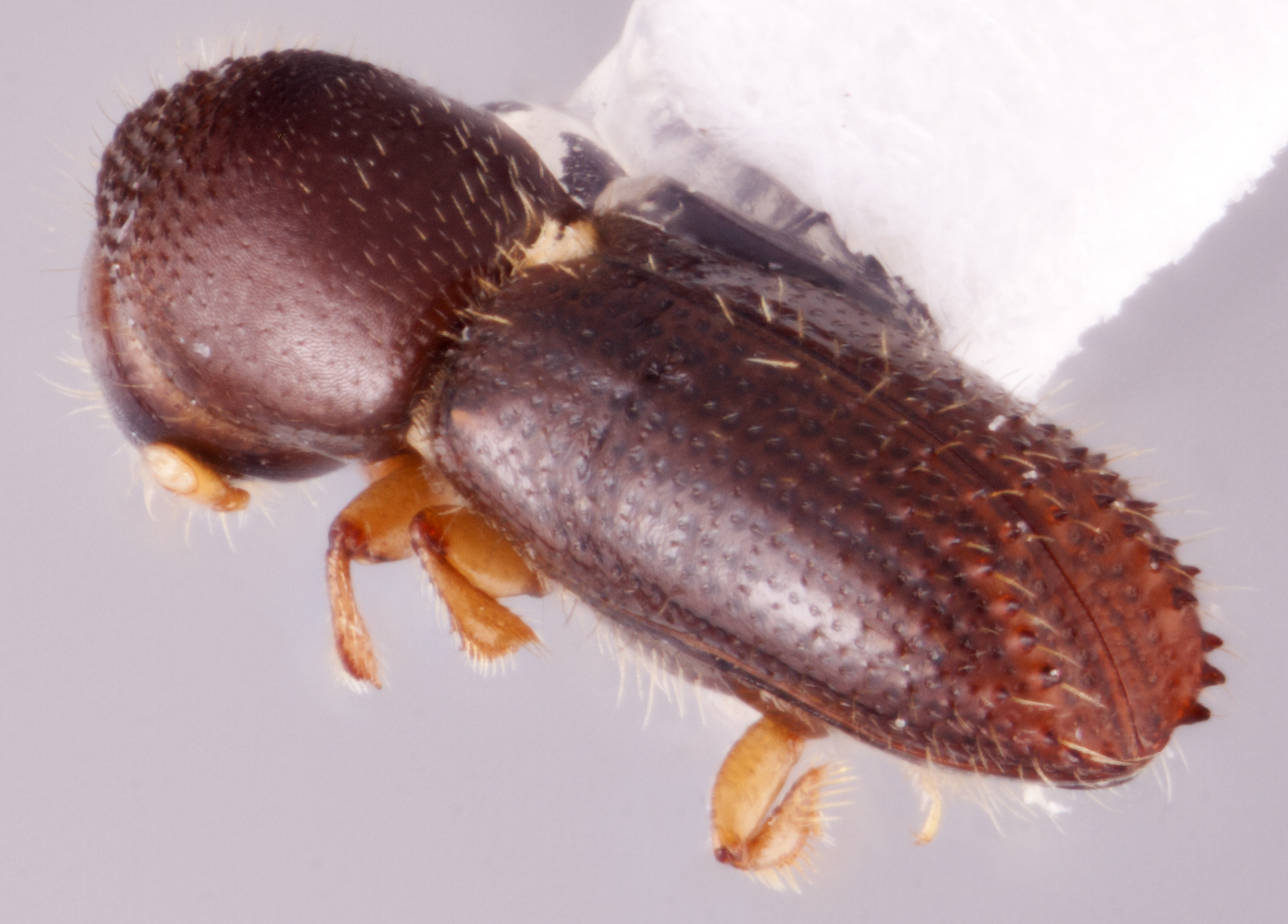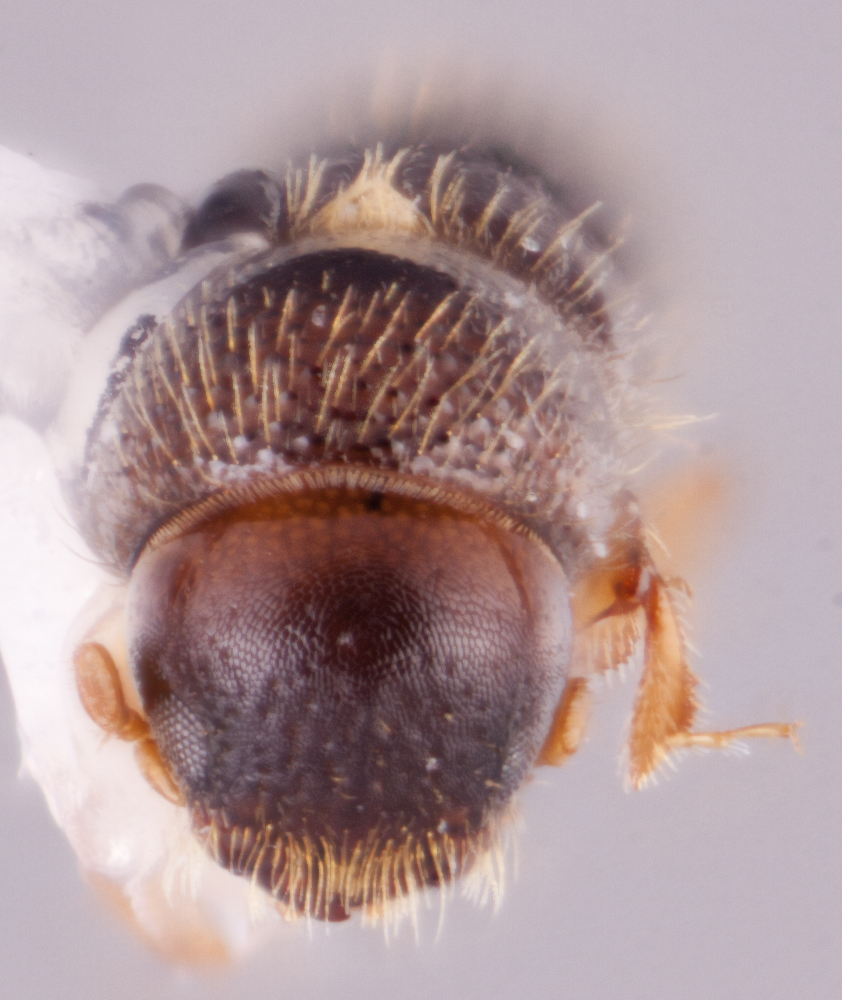Xyleborinus spinipennis
|
Xyleborinus spinipennis lateral; R.K. Osborn |
|
Xyleborinus spinipennis dorsal; R.K. Osborn |
|
Xyleborinus spinipennis declivity; R.K. Osborn |
|
Xyleborinus spinipennis frontal; R.K. Osborn |
Taxonomic history
Xyleborus spinipennis Eggers, 1930: 202.
Xyleborinus spinipennis (Eggers): Wood and Bright, 1992: 817.
Diagnosis
2.3−2.75 mm long (mean = 2.56 mm; n = 5); 2.83−2.89 times as long as wide. This species is distinguished by the elytraelytron:
the two sclerotized forewings of beetles that protect and cover the flight wings
parallel-sided in basalbase:
point or edge closest to the body; opposite of apex half, tapering posteriorly; declivitaldeclivital:
half, tapering posteriorly; declivitaldeclivital:
pertaining to the elytral declivity
face with interstriaeinterstria:
longitudinal spaces along the elytra between the striae, which is not as<br />
impressed and bear smaller punctures.
 1 and 2 unarmed by tubercles; elytralelytral:
1 and 2 unarmed by tubercles; elytralelytral:
pertaining to the elytra
declivitaldeclivital:
pertaining to the elytral declivity
face moderately sulcatesulcate:
deeply furrowed or grooved
; small body size; laterallateral:
pertaining to the side
 declivitaldeclivital:
declivitaldeclivital:
pertaining to the elytral declivity
margins moderately elevated, costate, bearing 4−6 pairs of large sharply pointed backwardly hooked denticlesdenticle:
a small tooth, the sides of which are equal and the tip is above the middle of the base (often asymmetric); strial punctures large; elytraelytron:
(often asymmetric); strial punctures large; elytraelytron:
the two sclerotized forewings of beetles that protect and cover the flight wings
with small denticlesdenticle:
a small tooth, the sides of which are equal and the tip is above the middle of the base on interstriaeinterstria:
on interstriaeinterstria:
longitudinal spaces along the elytra between the striae, which is not as<br />
impressed and bear smaller punctures.
 1−4 not extending further than the declivitaldeclivital:
1−4 not extending further than the declivitaldeclivital:
pertaining to the elytral declivity
summit; declivitaldeclivital:
pertaining to the elytral declivity
surface shagreenedshagreened:
covered with a closely-set roughness, like shark skin  , dull; and elongate body form.
, dull; and elongate body form.
This species is very similar to X. cuneatus and can be distinguished by the larger size, less elongate form, elytraelytron:
the two sclerotized forewings of beetles that protect and cover the flight wings
with small denticlesdenticle:
a small tooth, the sides of which are equal and the tip is above the middle of the base on interstriaeinterstria:
on interstriaeinterstria:
longitudinal spaces along the elytra between the striae, which is not as<br />
impressed and bear smaller punctures.
 1−4 not extending further than the declivitaldeclivital:
1−4 not extending further than the declivitaldeclivital:
pertaining to the elytral declivity
summit, pronotumpronotum:
the dorsal surface of the thorax
less elongate, 1.14 times as long as wide.
May be confused with
Xyleborinus artestriatus, X. cuneatus, X. echinopterus, X. ephialtodes, X. kwangruengensis, X. octiesdentatus, X. schaufussi, and X. speciosus
Distribution
China (Sichuan, Yunnan), India (Assam), Laos, Nepal, Vietnam
Host plants
unknown (Smith et al. 2020bSmith et al. 2020b:
Smith SM, Beaver RA, and Cognato AI. 2020b. A monograph of the Xyleborini (Coleoptera, Curculionidae, Scolytinae) of the Indochinese Peninsula (except Malaysia) and China. ZooKeys 983: 1-442. https://doi.org/10.3897/zookeys.983.52630)
Remarks
Eggers (1930) stated that the species was 2.0 mm long in his description. The holotype was measured by S.L. Wood and was found to be 2.4 mm long.
DNA data
specimens not available for sequencing





